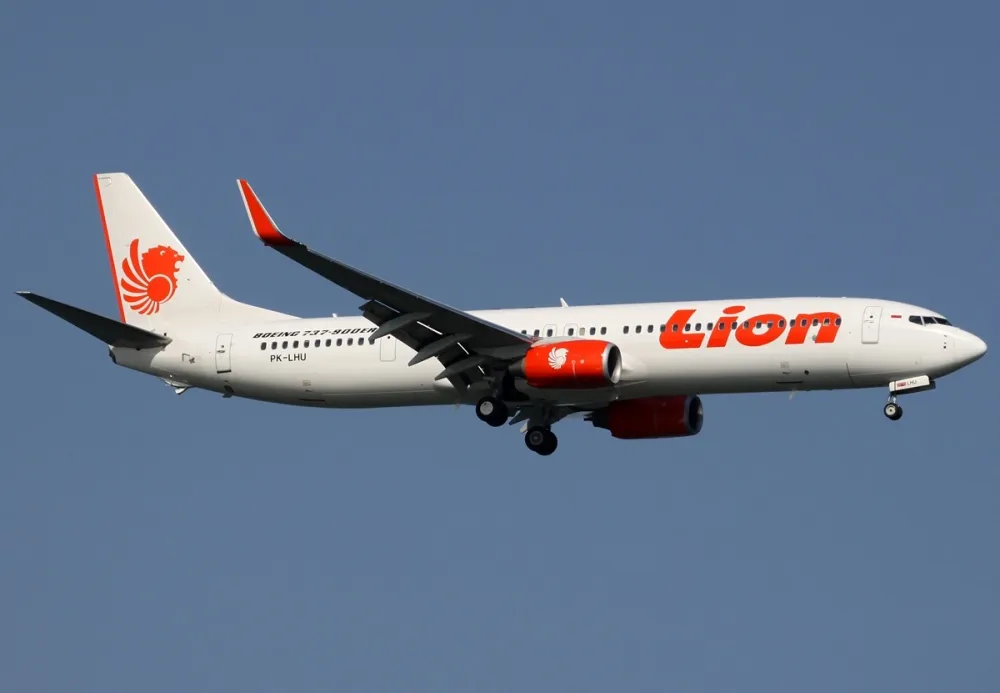
Lion Air fuselage and second black box located
Nov 03, 2018

The Lion Air fuselage was located in the Java Sea, providing crucial evidence in the investigation of the tragic crash that occurred in October 2018. Search teams conducted extensive underwater operations to recover key parts of the aircraft, which helped to reconstruct the sequence of events leading to the accident. Additionally, the second black box, containing vital flight data, was found nearby, offering insights into the aircraft's performance and crew actions before the incident. The recovery of these components has been essential in understanding the causes of the crash and improving safety measures for future flights.
Understanding the Lion Air Fuselage Recovery
The recovery of the Lion Air fuselage has been a significant development in the ongoing investigation into the tragic crash that occurred on October 29, 2018. This incident drew international attention and raised numerous questions about aviation safety. The fuselage, which is the main body of the aircraft, plays a crucial role in understanding the events leading up to the crash. The efforts to recover and analyze the fuselage are vital for improving aviation standards and ensuring passenger safety.
Location of the Fuselage
The fuselage of Lion Air Flight JT610 was located in the Java Sea, approximately 13 miles off the coast of Jakarta. Recovery operations involved a combination of specialized underwater equipment and dedicated teams working tirelessly to retrieve the wreckage. The location of the fuselage provided critical information about the flight's final moments, and investigators have been analyzing the structure for evidence of mechanical failure or other contributing factors.
Significance of the Second Black Box
In addition to the fuselage, the recovery team successfully located the second black box of the Lion Air aircraft. The black box, which consists of the cockpit voice recorder (CVR) and flight data recorder (FDR), is essential for piecing together the events leading up to the crash. The data retrieved from both black boxes is expected to provide insights into the pilots' actions, as well as the aircraft's performance during its final flight.
Chart of Key Findings from the Investigation
| Finding | Description |
|---|---|
| Fuselage Condition | The fuselage showed signs of impact damage, indicating a high-speed descent. |
| Black Box Data | Initial findings suggest malfunctioning flight control systems. |
| Pilot Response | Analysis of the CVR indicated confusion and attempts to regain control. |
| Maintenance Records | Reports show previous issues with the aircraft's software and hardware. |
Implications for Aviation Safety
The recovery of the Lion Air fuselage and the second black box has significant implications for aviation safety. As investigators continue to analyze the data, the aviation industry eagerly anticipates recommendations that could stem from this tragedy. The findings will likely influence regulatory changes and improvements in pilot training, aircraft maintenance, and technology integration.
Lessons Learned from Lion Air's Incident
Each aviation incident offers the industry lessons that can lead to safer travel. The Lion Air crash highlighted the importance of thorough pre-flight checks and the need for robust training programs for pilots, particularly when dealing with new aircraft systems. This incident also prompted a renewed focus on the importance of addressing any software malfunctions promptly.
Future of Aviation Technology
With the recovery efforts from the Lion Air crash, there is a growing emphasis on advancing aviation technology. Innovations in aircraft design, materials, and avionics are crucial for enhancing safety. The data obtained from the black boxes can guide manufacturers in developing more resilient systems and predictive maintenance techniques.
Conclusion
As the investigation into the Lion Air crash continues, the recovery of the fuselage and the second black box has provided critical data necessary for understanding this tragic event. Aviation stakeholders must prioritize the lessons learned from this incident to enhance safety measures and technology advancements. The ongoing analysis will not only honor the lives lost but also pave the way for a safer future in air travel.
In summary, the Lion Air fuselage recovery and the location of the second black box serve as pivotal moments in the ongoing quest for improved aviation safety. By focusing on the key findings and implications of this tragic event, the industry can work towards ensuring that similar incidents do not occur in the future.
Related Articles

Explore Thailand: The Best Islands to Visit for Paradise, Adventure, and Relaxation

The Ultimate Guide to the Best Islands in Thailand for Your Next Getaway

Do babies need passports? How to get a passport for a newborn

How to get a U.S. passport fast: here’s how to expedite the process

What is Mobile Passport Control: 5 reasons why you should use it

SENTRI vs. Global Entry: A detailed guide

Do you need a passport to go to the Bahamas? Let’s find out

Do you need a passport to go to Mexico? A detailed guide

Do you need a passport to go to Canada? We got the answer

Do You Need a Passport for a Cruise: An Essential Travel Guide

Booster Seat Requirements: All the Rules to Follow in Your Rental Car

What Are the World’s Most Powerful Passports, and How Does Yours Rank?

How to Take a Passport Photo at Home: A Helpful Guide

You've got to have heart! Southwest's new livery

Your opinion: Should water be free on low cost carriers?

Young women bolder than guys as solo travellers
